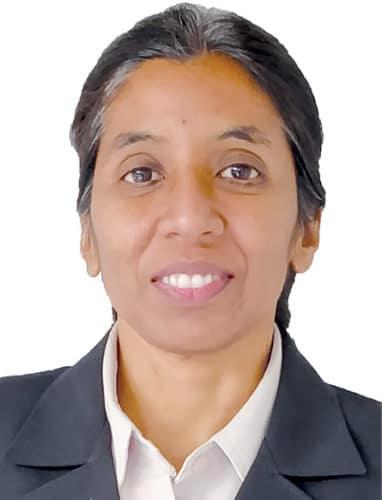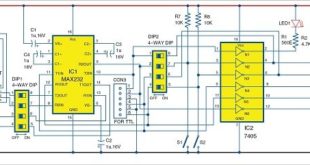What technological advancements will 5G bring? Will these work on the basic 4G paradigm? Nidhi Arora, executive editor, Electronics For You, discusses the same in conversation with R. Ezhirpavai, assistant vice president – SPD and PSM technology, Aricent.

Q. What impact will we see when 5G launches at full-scale in India?
A. Vendors will leverage 5G to create value-added applications that require low latency. This will provide a better quality experience to users.
Quality of services can be enhanced using Edge networks. These cache data and provide content with low latency. This will allow 5G to replace cables.
Q. What advancements are being done with regards to antennae?
A. 5G brings in Massive MIMO with 64 to 256 antennae. 5G has been defined for low and mid bands, and sub-6GHz and millimetre-wave (above 20GHz) spectra.
When 5G is used in millimetre-wave, antennae must support directional pointing to achieve higher antennation. Millimetre-wave requires more antennae in short distances with higher power. These offer high speed when placed within a 100-metre range.
5G also defines how antenna arrays can be used to improve signal-to-noise ratio (SNR) and increase capacity.
Q. What are 5G’s possible data rates?
A. 3GPP (Third Generation Partnership Project) says that data rates can go up to 10Gbps. This is achieved using a 100MHz spectrum made available to a single carrier in millimetre-wave, Massive MIMO, better SNR ratio and better spectrum efficiency.
Q. What techniques are used at transmitter and receiver sides for 5G?
A. Polar channel coding has been adopted for 5G. It reduces errors of transmission by correcting at the receiver side.
Q. Which application areas will see significant improvements with 5G?
A. Applications that require higher bandwidth and lower latency, along with the Internet of Things and video streaming applications.
Q. What is the difference between 5G and 4G?
A. The main difference is in sub-frame length and spacing. 5G uses OFDM for downlink and FBMC for uplink. 4G uses SC-FDMA for uplink.
4G needs 1ms sub-frame length with 10 sub-frames in 20 slots. While, 5G defines 0.2ms sub-frame length with 50 sub-frames in 100 slots.
Polar coding is used instead of turbo coding in 5G.
Bandwidth in 5G can be 100MHz and 200MHz in high band. In LTE, max bandwidth is 20MHz.
Q. How is the design of hardware changing with the advent of 5G?
A. Network infrastructure is moving away from compute at remote sites to compute in data centres. Network has become highly adaptable to increasing capacity needs.
Stateless methods and the move to data centres make networks more reliable and less prone to network failures.
Data chaining allows the path to be rediscovered in case of failures.
Q. How far have we come in building a standard for 5G technology?
A. 3GPP drives the standardisation for 5G. ITU-T will adapt 3GPP and add additional features that could be deployment or country specific.
Currently, only Non-Stand Alone mode has been standardised. Here, the core network remains 4G, and access supports dual or split bearers on 5G and 4G. With Stand Alone specification, even the core network changes.
5G provides network as a service using network slicing.
An architectural change is the use of control-user plane separation in core and in access. With this, one can offload data traffic on the edge of the network, allowing Edge compute to provide low latency to specific apps.
3GPP defines the mechanism of how handovers of data plane will be achieved. But, it is yet to be seen how the apps will undergo handovers from one Edge platform to another.
Q. Will 5G waveband be licensed?
A. 3GPP has defined both licensed (24GHz to 50GHz) and unlicensed bands (60GHz to 80GHz) for 5G. 60GHz and above will have high attenuation. To support this, power requirements and complexity of devices will be high. Hence, unlicensed band may not be used for general commercial use.
Q. India still cannot maintain a consistent 3G/4G network. Will this change with 5G?
A. 5G will always be an overlay over 4G. 3GPP has defined handovers from 4G to 5G, but not from 3G to 5G.
Q. Telecom players are undergoing reshuffling. How is this impacting the drive for 5G in India?
A. Increasing need to increase revenue is the main reason for this reshuffling. Operators cannot increase average revenue per user. With 5G, there will be fibre connectivity up to the last mile. This will lead to collaborations between fixed network operators and wireless operators.
This content was originally published here.








